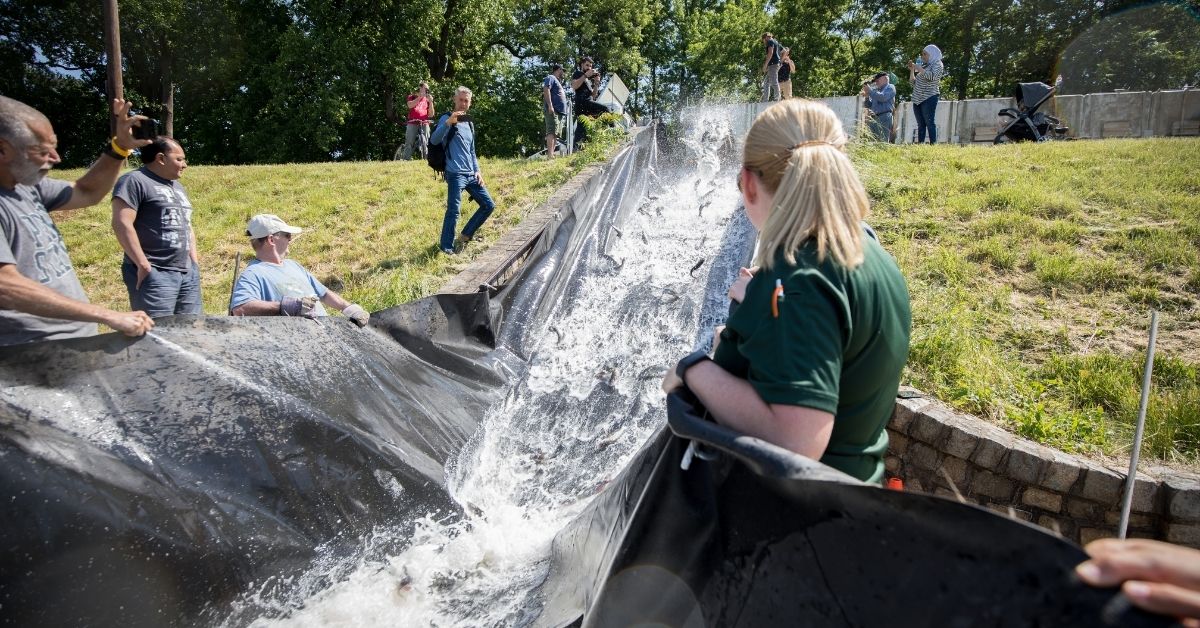
Stocking channel catfish into urban waterbodies takes organization, teamwork, and innovation!
By Alex McCrickard, DWR Angling Education Coordinator
Photos by Meghan Marchetti/DWR
Every spring, the Virginia Department of Wildlife Resources (DWR) stocks channel catfish at various urban impoundments across the state. This effort is part of DWR’s FishLocalVA initiative and is aimed at creating exceptional angling opportunities in urban metropolitan areas. It’s an effort that has a lot of moving parts, from acquiring the channel catfish to distribution across the state including transportation and stocking efforts. DWR’s hatchery staff work with fisheries biologists, outreach staff, agency complementary workforce volunteers, and other regional entities to get the job completed. It takes a lot of coordination, and behind it all is Chris Dahlem, hatchery manager at King & Queen Fish Hatchery.
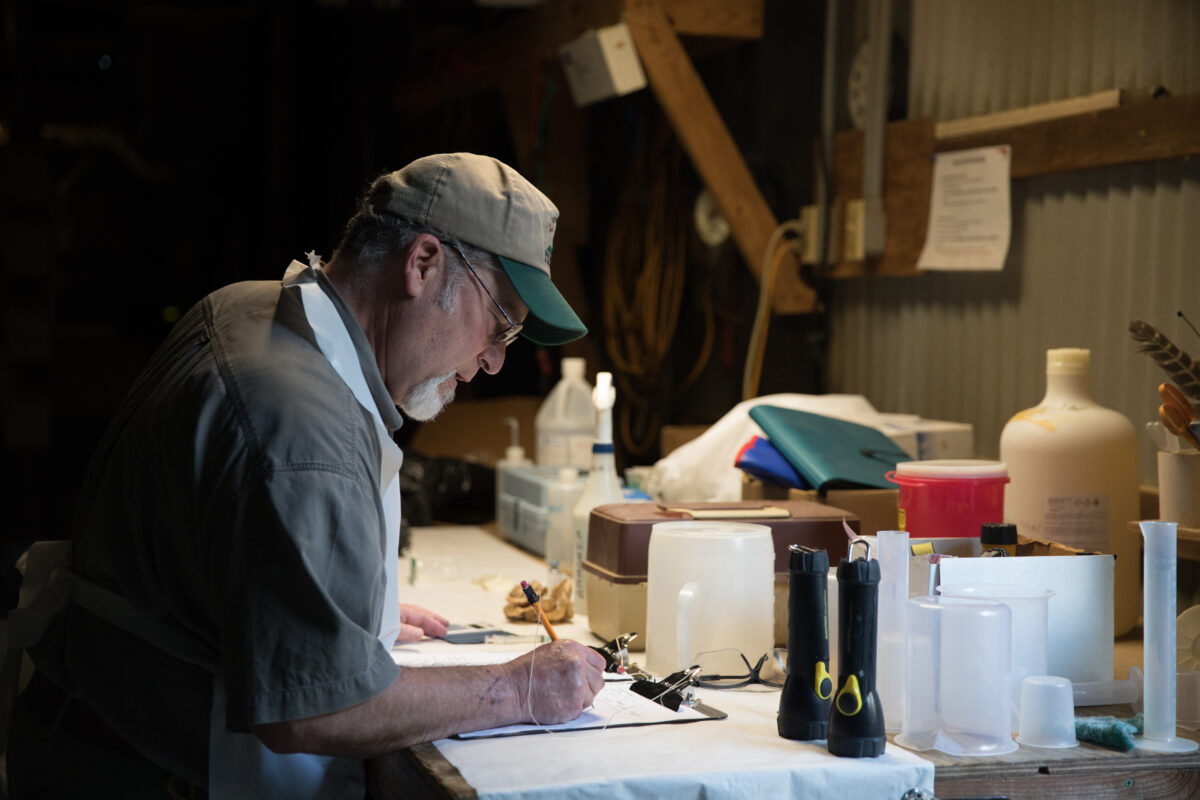
“We used to raise channel catfish, but they need a longer and warmer growing season than Virginia provides,” said Chris Dahlem. “Now DWR purchases the catfish from vendors in the south, where they are much more efficiently grown, opening up more DWR hatchery ponds for producing a multitude of other fish types. My station acts as the urban catfish program distribution and coordination center.
“Coordination is the key,” said Dahlem. “Once my supervisor does the legwork to determine the need and procure the fish, it’s my task to receive the five tons of catfish and distribute them using seven trucks from five hatcheries, all within two days.”
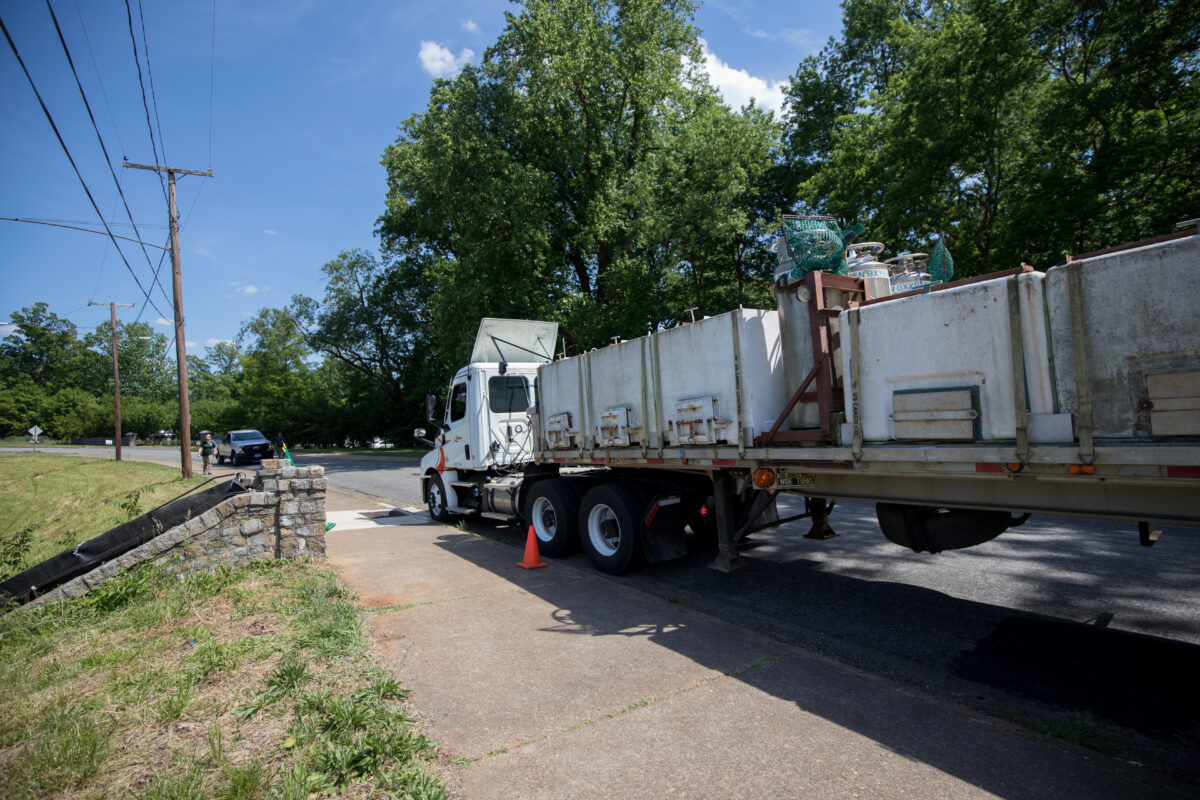
One of the stocking trucks.
Most of the channel catfish stocking destinations require multiple people involved in the process of offloading the stocking trucks. So, in addition to DWR hatchery staff and additional staff from other DWR divisions such as Aquatic, Outreach, and Maintenance, others such as DWR Conservation Police Officers, volunteers, and end users (county and city managers, parks rangers, fisher folks, etc.), pitch in to help accomplish the task.
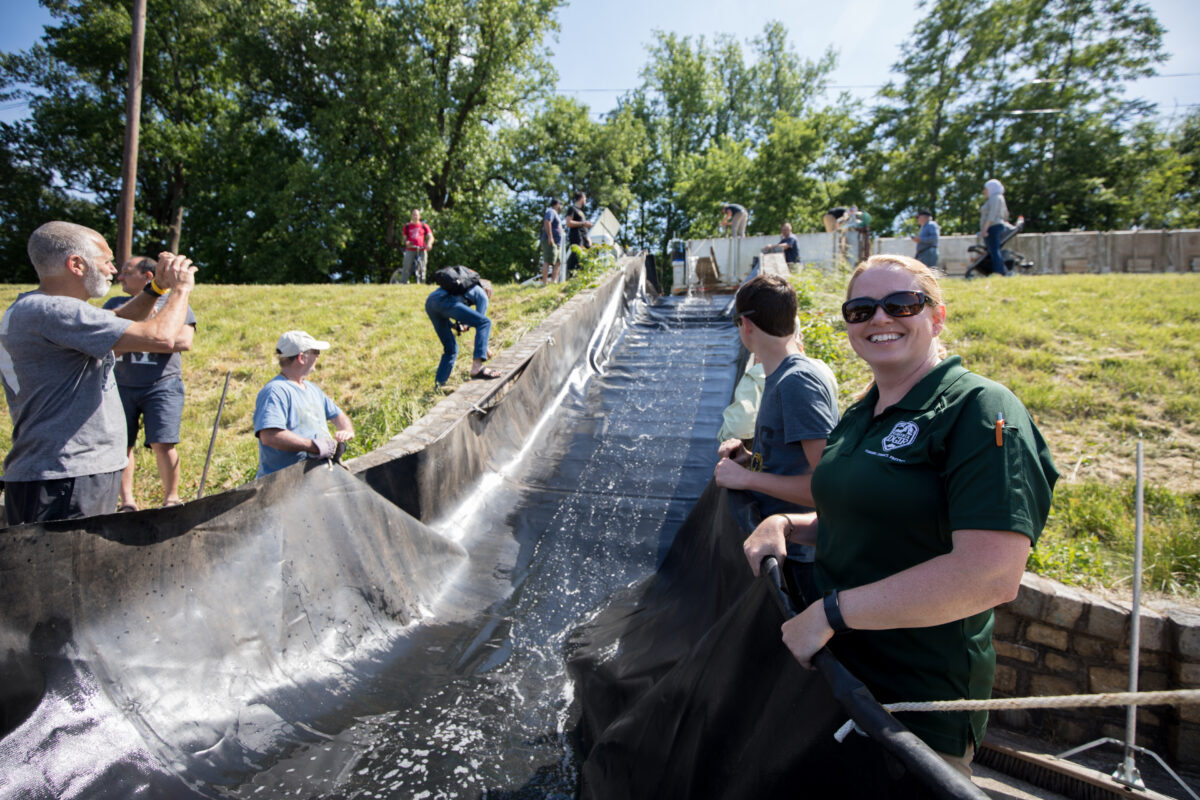
DWR staff and volunteers helping with the stocking at Shield’s Lake.
“Every year brings new challenges,” said Dahlem. “This year we used old pond liner material to turn a park stone stairwell into a 50-foot fish slide in order to get the fish from the truck to the water with the least amount of handling stress on them (and us) as possible.”
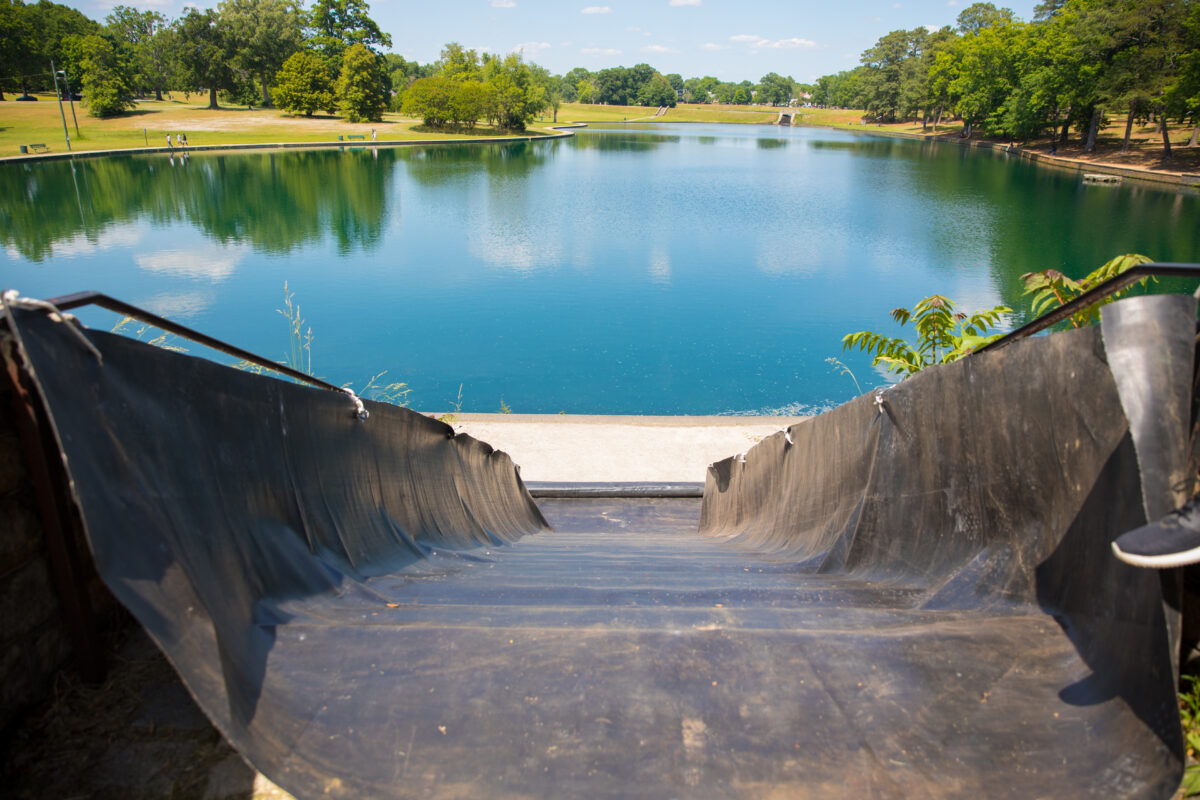
Recently, channel catfish were stocked at impoundments including Dorey Park Pond, Northwest River Park, Oak Grove Lake, Shields Lake, Cook Lake, Locust Shade, Old Cossey Pond, Armistead Pointe Pond, and Wilkins Lake.
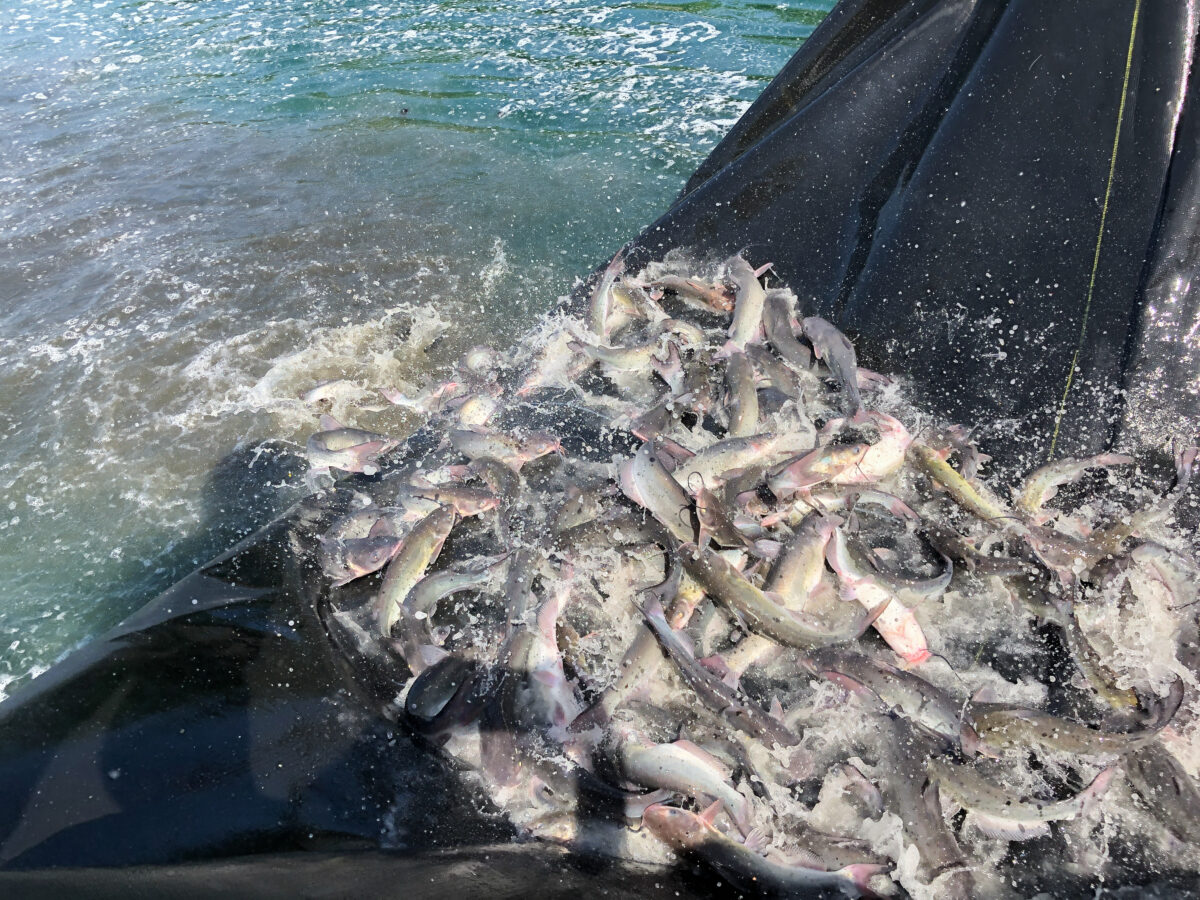
Channel catfish are great fun on rod and reel and an excellent species to target when introducing someone to the sport of fishing. Consider visiting one of the FishLocalVA waters that was recently stocked with friends and family as Free Fishing Days is coming up the first weekend in June! A 6′ or 6’6″ medium- or medium-light action spinning rod is perfect for targeting these freshly stocked fish. Anglers can find success fishing on the bottom with a Carolina rig set with a small circle hook and a ¼ or ½ ounce sinker. For bait you can try night crawlers, chicken livers, or fresh cut bait.
For additional information on how to catch channel catfish check out our July 2020 Fishing Report where we break down tactics and techniques at Dorey Park in Henrico, Virginia.
Channel catfish are also one of the best-eating freshwater fish you can catch. Always check the regulations before planning your trip. The waterbodies mentioned above have a creel limit of four channel catfish per person per day with no size limit. You can also only have one active fishing rod per angler on these waters.


